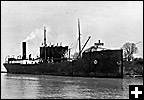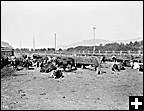Common menu bar links
Canadian statistics in 1886
Archived Content
Information identified as archived is provided for reference, research or recordkeeping purposes. It is not subject to the Government of Canada Web Standards and has not been altered or updated since it was archived. Please contact us to request a format other than those available.
Following the 1885 edition of the Statistical Abstract and Record, the publication was overhauled and enlarged by the Department of Agriculture. The 1886 edition, named Statistical Abstract and Record for 1886, included new chapters on the constitution, government, education, arts, agriculture and immigration, and longer chapters on inland revenue, militia and banking. It also had a section concerning “what was by then the soundly established program of criminal statistics.”
The 1886 edition had its shortcomings. The chapters on railways and fisheries were shorter than intended, “owing to the inexcusable delay on the part of some companies in making returns.” The vital statistics data were “rehashes of census data admixed with the new urban ‘mortuary statistics.’”
Collecting vital statistics

The data on births and death from the 1871 and 1881 censuses were unreliable, because “when births and death are enquired into by means of a census, the number recorded falls very short of the actual rate, and in a country like Canada the discrepancies are likely to be greater than in older and more settled places.” Data on deaths were so unreliable, they could not be used as benchmarks in later years.
Although the collection of vital statistics had become the responsibility of the provinces in the Census and Statistics Act, 1879, “the collection, compilation, tabulation and publication of mortuary statistics, including the causes of deaths, and the gathering of collateral information on the state of public health” were done in co-operation with the Department of Agriculture. In the first year of provincial collection, 1883, only six cities reported data, but by 1886 , this number had grown to twenty-two cities.
Counting the population
The population of Canada increased dramatically from 1871 to 1881—from 3,635,024 to 4,324,810 people. The fastest-growing province was Manitoba, where the population increased by 247.2%, followed by British Columbia, where it increased by 36.4%.
Health and immigration

People in major Canadian cities were often plagued by malnutrition and disease. In 1885, Montréal had the highest death rate, at 54.25 deaths per 1000 people, “owing to the violent attack of small-pox from which the city suffered in 1885, there having been no less than 3,193 deaths from that disease.”
Throughout Canada, young children were most vulnerable to malnutrition and disease—53.71% of those that died in 1885 were less than 5 years of age. Causes of death included premature birth, smallpox, malnutrition, lung disease, diarrheal affections, diphtheria, cerebro-spinal and throat diseases, and circulatory system diseases.
Immigration declined from 1883 to 1886, from 133,624 to 69,152 people. More immigrants were choosing to settle in the United States than in Canada. In 1885, 75% of the 105,096 people who arrived in Canadian ports settled in Canada. In 1886, the percentage dropped to only 56% of the 122,581 people who arrived in Canadian ports.
The Dominion of Canada encouraged people to settle in the country by promoting “cheapened or so-called assisted passages” to agricultural labourers and their families and to female domestic servants, provided certified proof of occupation from a “magistrate or minister of religion” had been given to the steamship company in advance.
Revenue and expenses

Canada’s economic position was largely determined by the deficits accumulated in 1885 and 1886. With completion of the Canadian Pacific Railway on November 7, 1885, and expenses associated with suppression of the North-West Rebellion in the same year, Canada’s expenses exceeded its revenue by $2,240,059 in 1884/1885 and $5,834,572 in 1885/1886.
In 1885/1886, Canada spent a total of $39,011,612, and “after deducting the war expenditure, which was of an exceptional nature, it exceeded the figures...in 1868 by $22,348,300, an increase of 165 per cent.” About $10 million was spent on interest on the public debt, $4 million on subsidies to the provinces, $3 million to suppress the North-West Rebellion, $3 million for railways and public works, $3 million for the post office and $1 million for grants to Aboriginal peoples.
Measuring Canada’s wealth

Canada’s revenue rose 139% from 1868 to 1886.
The 1886 edition remarked that “minerals of almost every kind are known to exist, and their development in the future will constitute one of the chief sources of wealth for the country.” Iron ore deposits, discovered extensively in Nova Scotia, became a mainstay for the Canadian economy. Canada’s mineral wealth also included coal from Nova Scotia, the North-West Territories and Vancouver Island; silver from Ontario; copper ore from Ontario and Quebec; phosphate of lime from the Ottawa Valley; and, gold, mostly from British Columbia. From 1871 to 1886, the activities of 58 working mines in British Columbia produced $14,589,356 worth of gold!

The 1886 edition also commented that “the consumption of food is the best of all measures ‘of a nation’s prosperity,’ and the consumption of the two articles of tea and sugar per inhabitant is generally considered by statisticians as the best indication of the people’s condition.” In fact, sugar refining was extensively carried out in the cities of Halifax and Montréal. In 1886, each Canadian was believed to have consumed 37 pounds of sugar and 5 pounds of tea, compared with 15 pounds of sugar and 2 pounds of tea in 1868.
Trade depression lifts

A global trade depression affected Canadian exports for several years leading up to 1886. Less goods were sold. The values of Canada’s exports, most notably wheat, flour, corn, sheep, butter and cheese, declined. Trade in 1886 was worth $40,663,951 less than that in 1883.
In 1886, 3,419,168 bushels of Canadian wheat were exported—only a small percentage of the country’s total wheat production. Keeping the majority of Canada’s wheat in domestic markets was believed to provide farmers better prices than they would receive if the wheat were exported.
The 1886 edition also details that “the price of live cattle for export is now lower than it was some years ago, the causes of this being very similar in character to those that produced the depression in the price of wheat.” With the demand for foreign cattle slowing in European markets, the value of cattle exported from Canada dropped from $7.5 million in 1885 to $5.9 million in 1886.
There were, however, reports of renewed commercial activity with Canada’s trading partners. The success of the Canadian Agricultural Exhibit in London on May 4, 1886, sparked renewed interest in Canadian produce. The Minister of Agriculture noted that “many of our manufacturers and producers, as a result of this display, have obtained large orders, not only for export to the United Kingdom, but to distant parts of the globe.”
Appointing the first statistician
Statistics became more important to the government of the Dominion of Canada. A young journalist and imperialist, George Johnson, was commissioned to produce two bar graphs on trade and exchange between the United States and Canada for the 1886 edition. In 1887, Johnson was appointed as the Department of Agriculture’s first senior full-time statistician.
